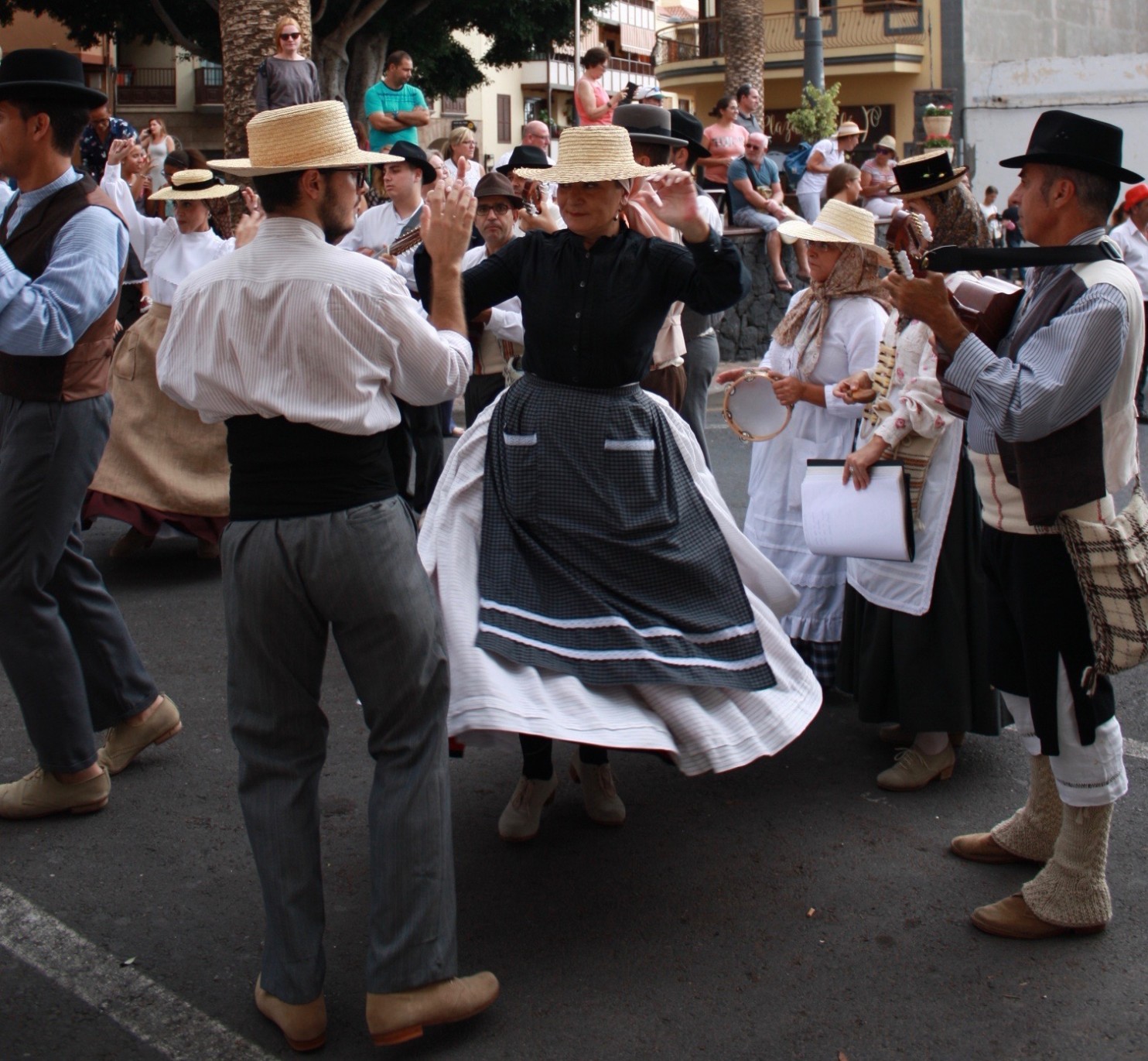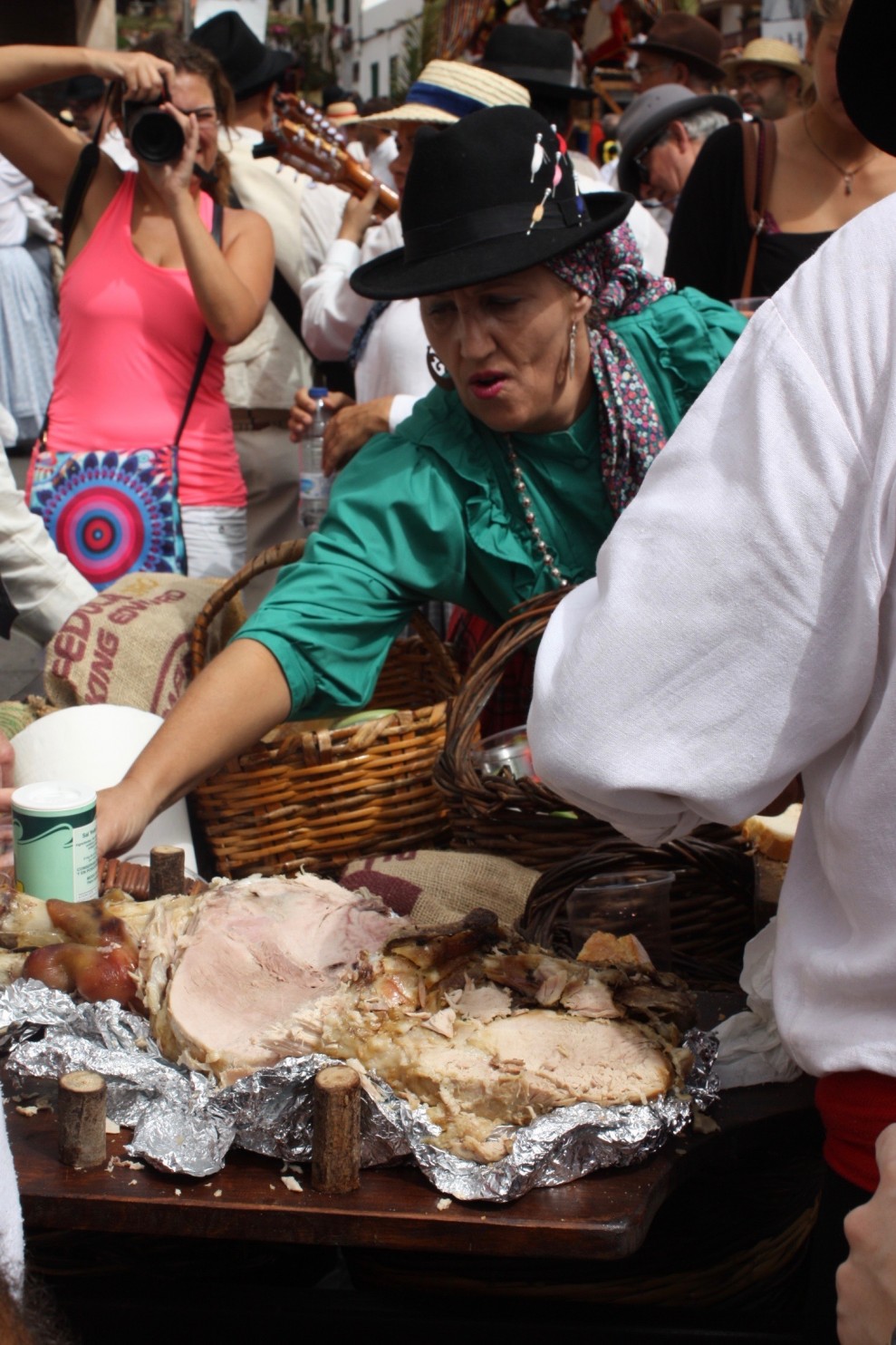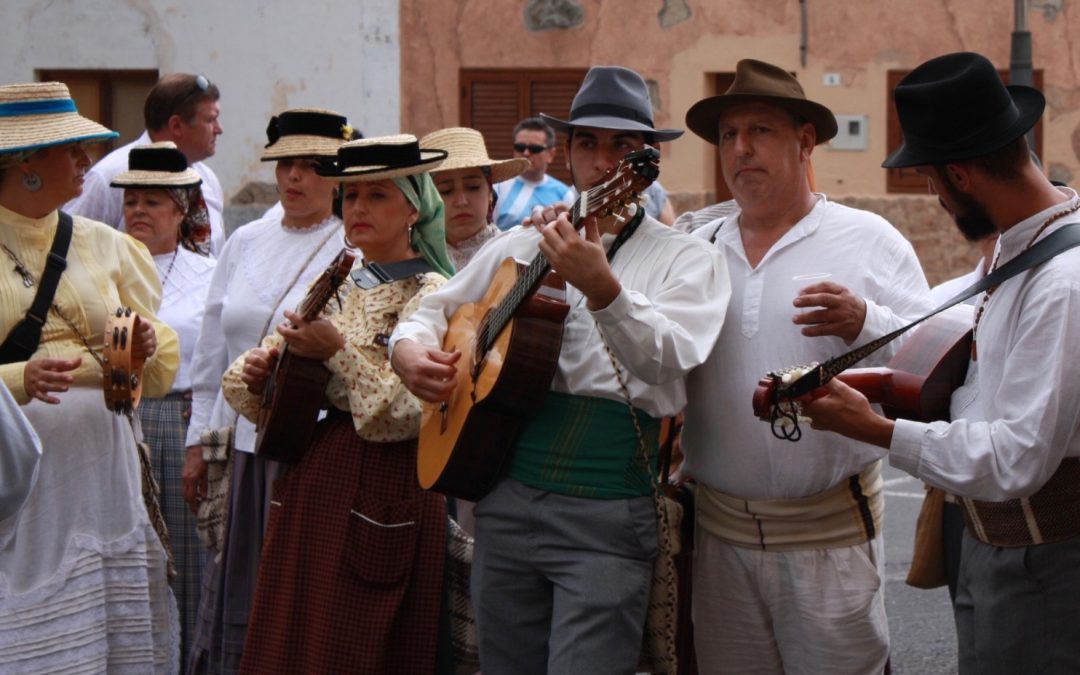People from Canary Islands love to celebrate and cherish their culture and traditions. A very typical and worth seeing example of those festivities is a “Romería”. In Adeje it will be celebrated on the 16th of October. Here is why you should not miss it.
Similar to the customs on the Spanish Peninsula and in Latin America, people in Canary Islands held many celebrations based on religion throughout the year. Those are a great opportunities for visitors, to get an insight in history and culture of the islands whilst having a great time with delicious food, uplifting music and locals in a good temper. Especially in Canary Islands Romerías are held as very popular and traditional celebrations.
What is a Romería
A Romería is one of those festivities mentioned above and stands for a pilgrimage, that can be done by foot, horse or carriage, leading to a sacred place such as a church or chapel. Originally the celebrations were thought to honour saints and their good doings for the people. Initially only the upper class of Tenerife revelled Romerías and throughout many years they became more popular and open for everybody. Nowadays a Romería is one of the most significant ways for Canarians to show and preserve their culture. The best comparison for it is a harvest festival.

Almost every region celebrates one during the year, each having a different background and diverse specialties. You can find them in the north and in the south of the island, however the Romerías in the north are mostly bigger. Here are some examples:
- Eucaristía en Honor a San Sebastián Mártir in Adeje. (January)
- Romería de San Marcos in Tegueste. (Last Sunday of April. It is one of the most famous Romerías and therefore attracts many people).
- Romería del Pico in Tejina, La Laguna. (May)
- Romería de San Isidro in Los Realejos. (Last Sunday of May)
- Romería de San Juan Bautista in Arico. (June)
- Romería de San Isidro in La Orotava. (June)
- Romería de San Benito Abad in La Laguna. (Second Sunday in July)
- Romería de Nuestra Señora de Candelaria in Candelaria. (15th August)
- Romería de San Agustín in Arafo. (Last Saturday in August)
- Romería de San Roque in Garachico. (16th August)
- Romería de la Virgen del Socorro in Güímar. (7th September)
- Romería de Nuestra Señora de la Encarnación in Adeje. (October)
The good side of it: the places alternate, so you do not have to fear missing one of the Romerías. The bad side: Canarians will never get rid of their bad image that the only thing they do, is celebrate parties ;).
What happens at a Romería?
To keep it short: A Romería is fun!
After many weeks of preparations and anticipation, the whole population of the town, where the Romería is held, meets in the morning to start celebrations and hundreds of visitors will be there. The main part is the parade: Everything will be decorated in a colourful manner, folklore groups present dances, horses and bulls carry wagons through the roads and there will be a lot of live music. Additionally you will be able to see many displays of farming activities and in some places they also present traditional sports such as stick fighting and Canarian wrestling.

A significant part is, that almost everybody dresses up in typical Canarian costumes, the visitors as well. Those are based on the farming attire and are complemented by typical accessories such as hats, knives, leather bags etc. But do not worry, you can buy simple versions of the costumes in local shops for very economic prices or simply rent them for the day of the Romería. It is like during carnaval on the Canary Islands – the better you blend in, the better the experience.
Another, very interesting aspect of a Romería is, that you will be able to taste local wines, food and products. And this happens in a very special way: people hand out free tasters of wine and dishes from the wagons. But you better be quick, the demand is high!
Additionally there are stands around, where you can buy souvenirs, drinks and food. There you can also get a “Vaso de Romería”, the cups people carry around in leather bags with their costumes. Those are essential for the wine tasting, though you should take care of having eaten enough before ;).
How is the Romería in Adeje organised?
The Romería in Adeje takes place this year on the 16th of October. It will be the last Romería of the season this year, so there are many people expected and the ambience will surely be very frolicsome. To get there, you can either come by car or by bus. When coming by car, you should better watch out for parking spaces a little further from Adeje center, as there will be probably many people around. Public buses from the local company Titsa are the other alternative to arrive – and thinking of the wine tasting, it will surely be the safest one, beside taking a taxi. Whatever option you choose: bring patience with you. Where there are many people celebrating, transport might need some more time as usual.

Celebrations in Adeje start early in the morning and can last until late night. Up from 11 o’clock in the morning the parade will move from Plaza del Cerco, continuing through Calle Grande and arriving at the church Santa Úrsula. This takes usually around 3 hours and will be a spectacular you will never forget.
But the real party begins afterwards. People stay on Plaza España, where you can sing and dance to live music, chat with locals, enjoy delicious food and feel like a Canarian.
Of course we will be there as well to show our students live the big value of Canarian culture and how to communicate in Spanish during a “fiesta local” :). See you there!
Your SMS Spanish Experience Team




